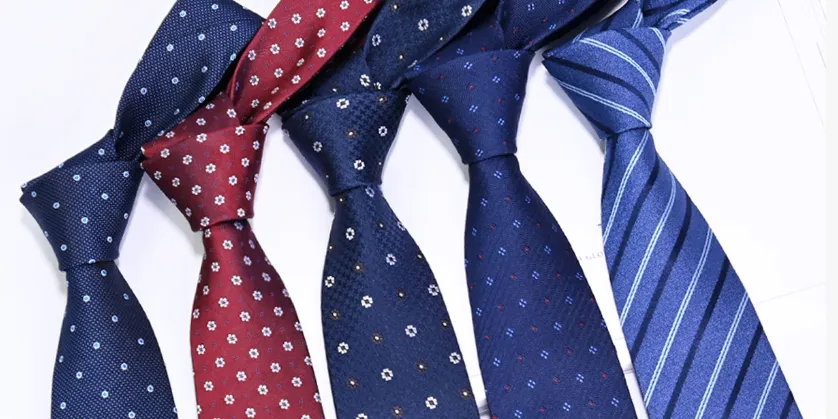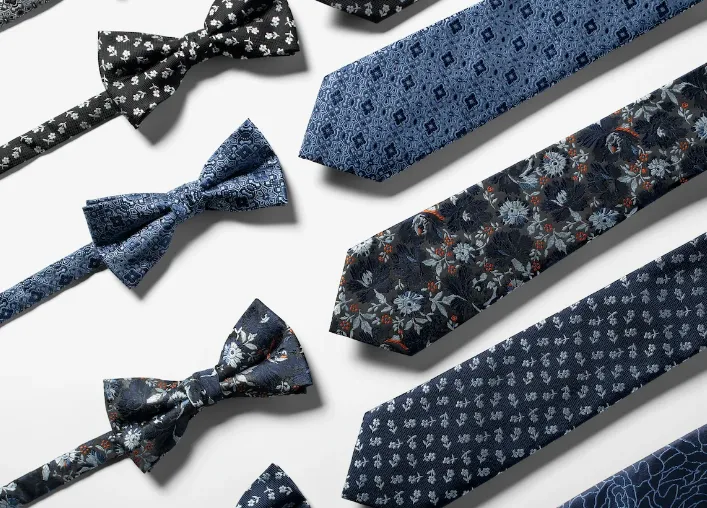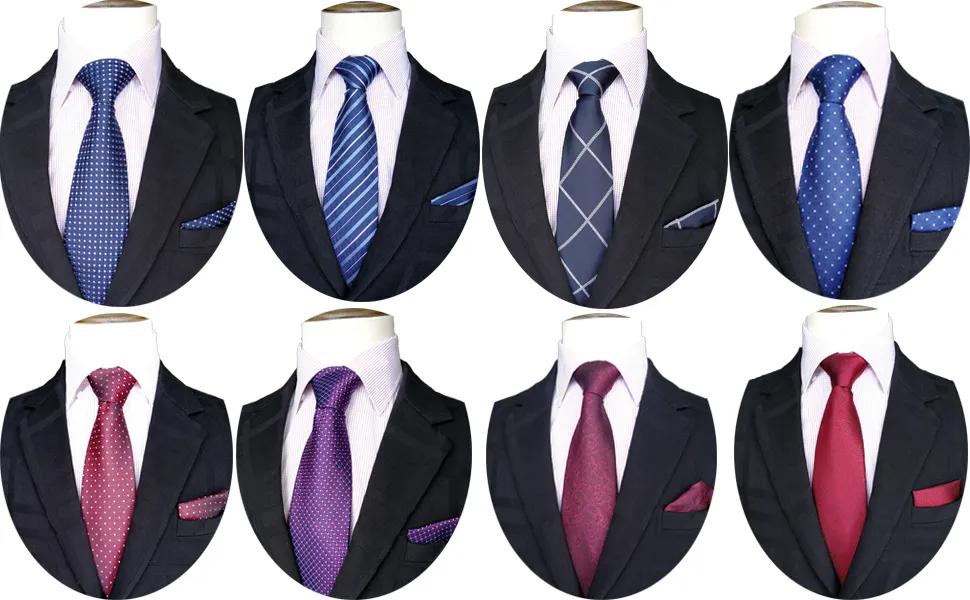How to source ties from China – strategically and sustainably

Sourcing ties from China presents a paradox. The market offers unparalleled scale, skill, and value, but it also demands rigorous due diligence. For procurement managers, CPOs, and brand owners, the goal isn't just to find the factory with the lowest ticket price. It's to identify a strategic partner capable of delivering consistent quality, adhering to stringent compliance standards, and scaling with your business.
This guide moves beyond superficial supplier lists. We provide an end-to-end framework for sourcing ties in China, integrating cost, quality, risk, and sustainability into a single, actionable strategy. This is the manual we use ourselves, and now we're sharing it with you.

Before you contact a single factory, your strategy must be crystal clear. This foundation dictates every decision that follows.
A vague request yields a vague quotation. Precision is paramount.
Technical Specs: Don't just say "silk tie." Specify the fabric type (e.g., 100% 6A Grade Mulberry Silk, 120g satin weave), dimensions (width at blade, length), construction (7-fold, 5-fold, unlined, tipped), and finishing (hand-stitched bar tack, blind stitch).
Commercial Terms: Determine your target FOB Shanghai price, annual volume projections, and acceptable Minimum Order Quantity (MOQ). Be realistic; a $5/unit target for a complex, fully lined 7-fold silk tie is not feasible.
The factory's unit cost is just the beginning. A professional TCA includes:
Tooling Costs: One-time fees for custom logo weaving jacquards or print screens.
Sample Costs: Prototyping and pre-production samples (often paid).
Quality Control: Budget for third-party inspection (e.g., SGS, QIMA) before shipment, typically 0.5-1% of order value.
Logistics: Freight, insurance, and customs clearance fees.
Payment Terms: Factor in the cost of letters of credit (LC) or the opportunity cost of a large upfront deposit.
Pro Tip: A factory quoting 8.50/unit with reliable quality and clearer terms is far cheaper than a factory quoting 7.00/unit that delivers late, inconsistent goods, forcing you to air freight replacements.
This is no longer a "nice-to-have." It's a core requirement for modern procurement.
Certifications Are Proof, Not Promises:Mandate valid, verifiable certificates. Key ones include:
OEKO-TEX Standard 100: Certifies textiles are free from harmful substances.
BSCI/Sedex SMETA: Social audits ensuring ethical labor practices.
GRS (Global Recycled Standard): For sourcing recycled materials.
Your Code of Conduct:Have a document outlining your policies on forced labor, working hours, wages, and environmental protection. Require potential suppliers to sign it.
A website and a glossy brochure are marketing materials. Your job is to uncover the operational reality.

2.1 Initial Screening and Background Checks
Platforms are a starting point: Use Alibaba and Global Sources to create a longlist, but never stop there.
Verify Business Legitimacy: Use Chinese business registration checks (like Qichacha) to verify the company's legal name, registration capital, and operating history. Cross-reference this with their export license.
Check Customs Data: Services like Panjiva can reveal a factory's actual shipping volumes and key customers. Do their claimed capabilities match their export activity?
Your first serious touchpoint. A professional factory expects these questions.
Production Capability: "What is your monthly production capacity for silk ties? How many sewing lines are dedicated to ties?"
Quality Control: "How many in-line QC staff do you have? What is your AQL standard for major/minor defects? Walk me through your inspection process."
Compliance: "Can you provide copies of your active BSCI audit report and OEKO-TEX certificates?"
Key Clients: "Which international brands are you currently producing for? (Under NDA, you can request general evidence without naming names.)
2.3 The 2025 Shortlist: Strategic Tie Manufacturing Partners in China
We evaluate partners based on strategic fit, not just size.
|
Manufacturer |
Key Differentiator |
Est. MOQ (Units) |
Key Certifications |
Ideal For |
|---|---|---|---|---|
|
Exquisite Silk |
Full-service accessories OEM, strong in design |
500 |
OEKO-TEX |
Brands seeking seasonal collections & variety |
|
Shengzhou YILI |
Vertical integration, Italian looms, large scale |
2,000 |
BSCI, OEKO-TEX |
High-volume corporate/uniform orders |
|
Hua Cuiyuan |
Premium direct printing, 6A Grade silk specialist |
1,000 |
OEKO-TEX |
Luxury brands, high-fashion designs |
|
Handsome Tie Co. |
Award-winning design, small-batch flexibility |
300 |
SGS, ITS |
Boutique brands, designer collaborations |
|
Boyi Neckwear |
Advanced jacquard weaving, complex custom logos |
1,500 |
BSCI |
Brands with intricate woven logo needs |
|
Yueran Textile |
Custom fabric printing, silk product range |
800 |
OEKO-TEX |
Brands requiring unique printed fabrics |
Note: MOQs are estimates and highly negotiable based on fabric, complexity, and partnership potential. Always request a formal quotation.
A well-negotiated order can still fail during execution. Control the process.

A pre-production sample isn't just for style approval. It's a prototype for construction.
Dissect It:Cut open a sample. Check the interlining quality, the number of folds, and the integrity of the stitching. Is it built to last?
Test It: Perform a simple colorfastness rub test. Check for consistent dyeing across the entire length of the tie.
Document It: Approve the sample with signed comments and photos. This is your legal benchmark for the bulk order quality.
Payment Structure: A standard and secure term is a 30% deposit with order and a 70% balance against a copy of the Bill of Lading. This protects both parties. Avoid 100% upfront payments.
IP Protection: Ensure your contract has a robust clause stating that your designs, patterns, and logos are your exclusive property.
Quality Clause: Specify that goods must pass a defined AQL (Acceptable Quality Level) inspection before shipment.
Do not skip this step. For orders over $10,000, hiring a third-party inspector is a wise investment.
The Inspection: A professional inspector will check for consistent dimensions, stitching defects, color mismatches, labeling accuracy, and packaging. They provide a detailed report with photos before the goods are shipped, giving you leverage to request repairs.
Incoterms Matter: FOB (Free On Board) is often best. You control the freight forwarder and shipping line once the goods are loaded on the vessel, balancing cost and control.
Prepare for Customs: Ensure your supplier provides a detailed commercial invoice and packing list. For the US, you'll need a country of origin label on each product.
The most significant cost savings and value come from long-term relationships. A trusted partner will prioritize your orders, offer better pricing on repeat business, and work with you to solve problems proactively. Invest in the relationship with clear communication and fair treatment.
Sourcing ties from China is a process of calculated de-risking. It's about applying a strategic lens to every step—from your initial specification sheet to the final QC report. By prioritizing deep partnership over transactional purchasing, you build a resilient, ethical, and high-quality supply chain that becomes a genuine competitive advantage for your brand.
The market is vast. Your approach must be focused.
Q1: What's the most secure payment method for a first-time order with a new factory?
A: We always recommend a T/T (Telegraphic Transfer) with a 30% deposit and 70% balance payable against a copy of the Bill of Lading. This protects both parties. You only pay the majority after the goods are shipped and you have proof. Avoid 100% upfront payments. Letters of Credit (L/C) are secure but add complexity and banking fees, often making them impractical for orders under $50,000.
Q2: We've had issues with communication clarity in the past. How can we ensure nothing is lost in translation?
A: This is a common hurdle. Insist on having one dedicated point of contact on the supplier's side who is fluent in English. For critical instructions (like tech packs or design changes), use visuals relentlessly. Send annotated pictures, diagrams, and even short video clips to clarify points. Summarize all verbal agreements in a follow-up email to create a written record. A good factory will acknowledge these summaries.
Q3: Our sales are sometimes unpredictable. Can we place a large order but schedule partial shipments?
A: This is negotiable but comes with costs. A factory can often store your finished goods in their warehouse for a short period (e.g., 30-60 days) and ship in batches. However, you will incur storage fees, and your capital is tied up in inventory sitting in China. You also take on the risk if something happens to the goods before they are shipped. It's often more flexible to negotiate a lower MOQ for repeat orders to allow for more agile re-ordering.
Q4: What happens if our goods are damaged during ocean freight? Who is responsible?
A: This is why your Incoterms are critical. If you ship under FOB (Free On Board), your responsibility and risk transfer to you once the goods are loaded onto the vessel at the Chinese port. You must have marine cargo insurance. The factory is not responsible for damage during transit. Always, always insure your shipments. It's a small percentage of the total cost that provides immense peace of mind.
Q5: Beyond audits, are there any "red flags" we can spot early when evaluating a supplier?
A: Absolutely. Pay attention to their responsiveness. A factory that is slow to answer simple questions before they have your money will be worse after. Vague answers about their capacity or key clients are a warning. Be wary of a sales contact who seems evasive about connecting you directly with their production or QC managers. Transparency is a good indicator of professionalism.
Q6: How do we handle a situation where a supplier asks for a price increase mid-production due to "rising material costs"?
A: This is a tough scenario. A reputable factory will have locked in material prices with their mills and will honor the agreed-upon price. The best defense is a solid contract that stipulates the price is fixed for the order. If a increase is requested, demand transparent proof, such as a official notice from their fabric mill. Often, it's better to absorb a small, verified increase to maintain the relationship, but make it clear this cannot be a recurring event.
Q7: We want to add a custom woven label inside the tie. How does this impact the process?
A: Custom woven labels are a great branding touch but add a separate production step. They are typically sourced from a specialized label factory, not the tie factory itself. You need to factor in an extra 2-3 weeks for the label production and an additional cost (usually a few cents per label). The tie manufacturer will need the labels delivered to them before they can begin sewing. Coordinate this timeline carefully.
Q8: Can we request that our order not be mixed with production runs for other brands in the same facility?
A: Yes, this is a standard request to ensure quality and prevent cross-contamination of designs. Factories are used to this. It's called asking for a "dedicated production run." They will schedule your order to be made in a defined block of time. There is usually no extra cost for this, but it needs to be clearly communicated and agreed upon during the order placement to be factored into their scheduling.
Q9: What is the best way to handle a sample we approve but then want to make a minor change to for bulk production?
A: Communicate the change immediately and request a confirmation sample. Do not assume a small change can be made without checking. For example, if you approved a sample but then want to change the stitching thread color, the factory must make a new sample with that change for your approval. This formal process prevents a massive and costly error in the bulk order. Never approve a sample with reservations.
Contact us
Call Us: +86 193 7668 8822
Email:[email protected]
Add: Building B, No.2, He Er Er Road, Dawangshan Community, Shajing Street, Bao'an District, Shenzhen, China